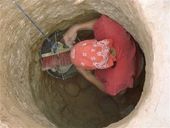Evanston, Illinois. --- To many, New York Gov. Eliott Spitzer's fall from grace seemed to make no sense at all. But a new Northwestern University study offers provocative insights that possibly could relate to why the storm trooper of reform -- formerly known as the Sheriff of Wall Street -- seemingly went from saint to sinner overnight.
The study suggests that people with ample moral self-worth in one aspect of their lives can slip into immorality or opposite behavior in other areas -- their abundant self-esteem somehow pushing them to balance out all that goodness.
Think, for example, of that sugar- and fat-laden concoction that you wolf down after an especially vigorous run, said Douglas Medin, professor of psychology in the Weinberg College of Arts and Sciences at Northwestern. "That pretty much eliminates the benefits of running an extra 20 minutes," he said.
Northwestern's Sonya Sachdeva, Rumen Iliev and Medin are co-authors of "Sinning Saints and Saintly Sinners: The Paradox of Moral Self-Regulation," published by the journal Psychological Science.
Conversely, the study shows, people who engage in immoral behavior cleanse themselves with good work.



